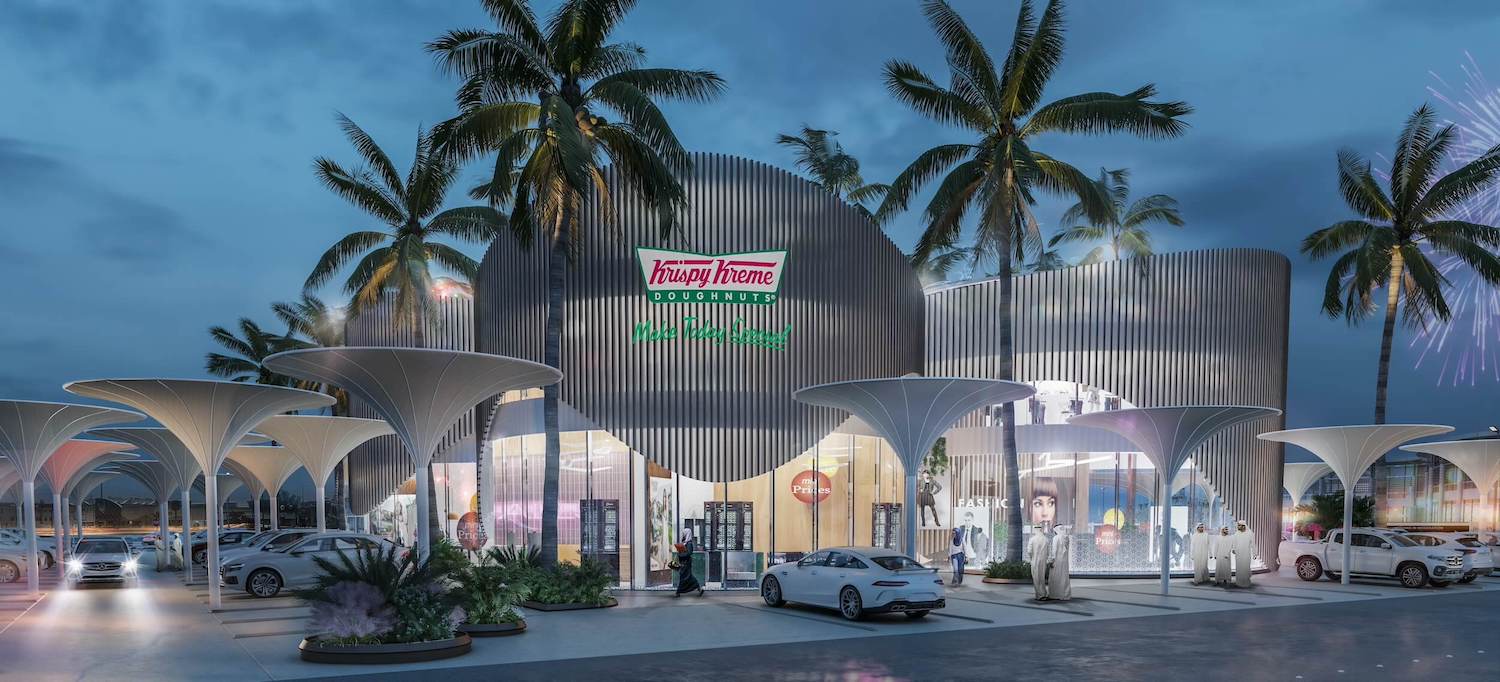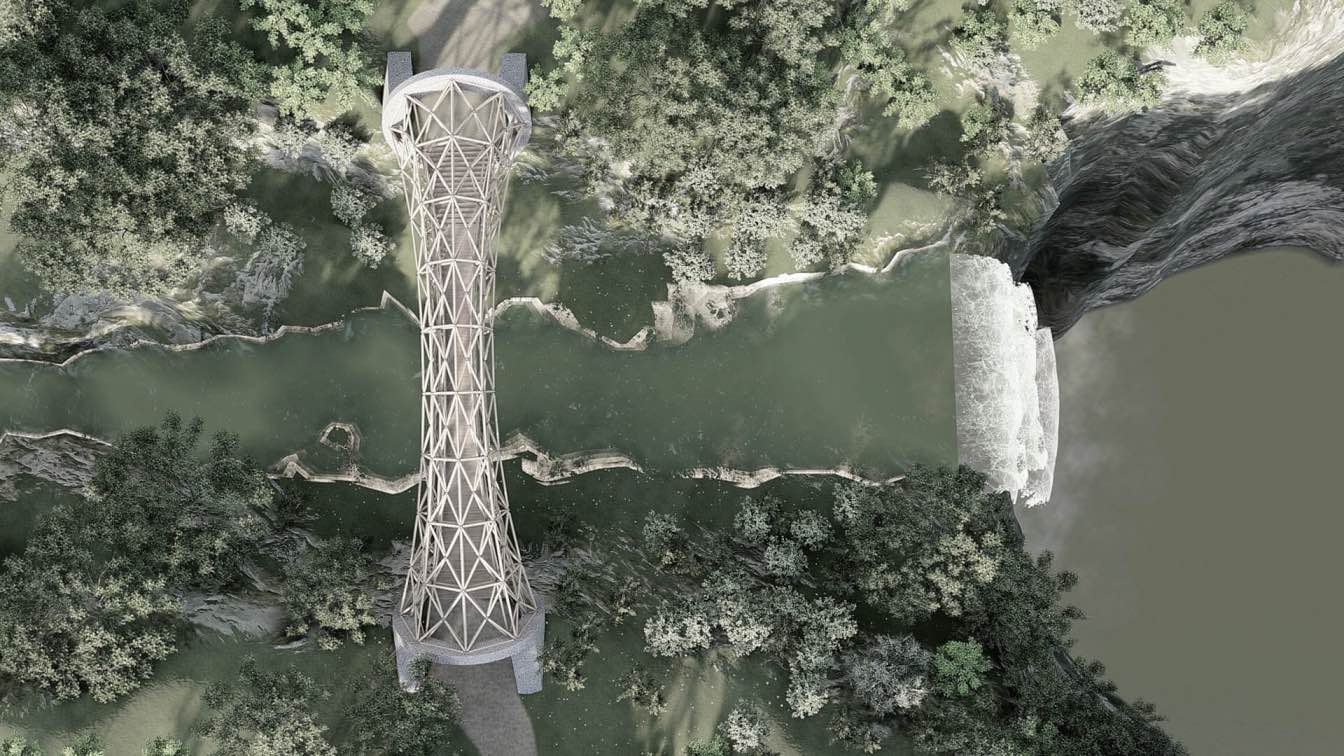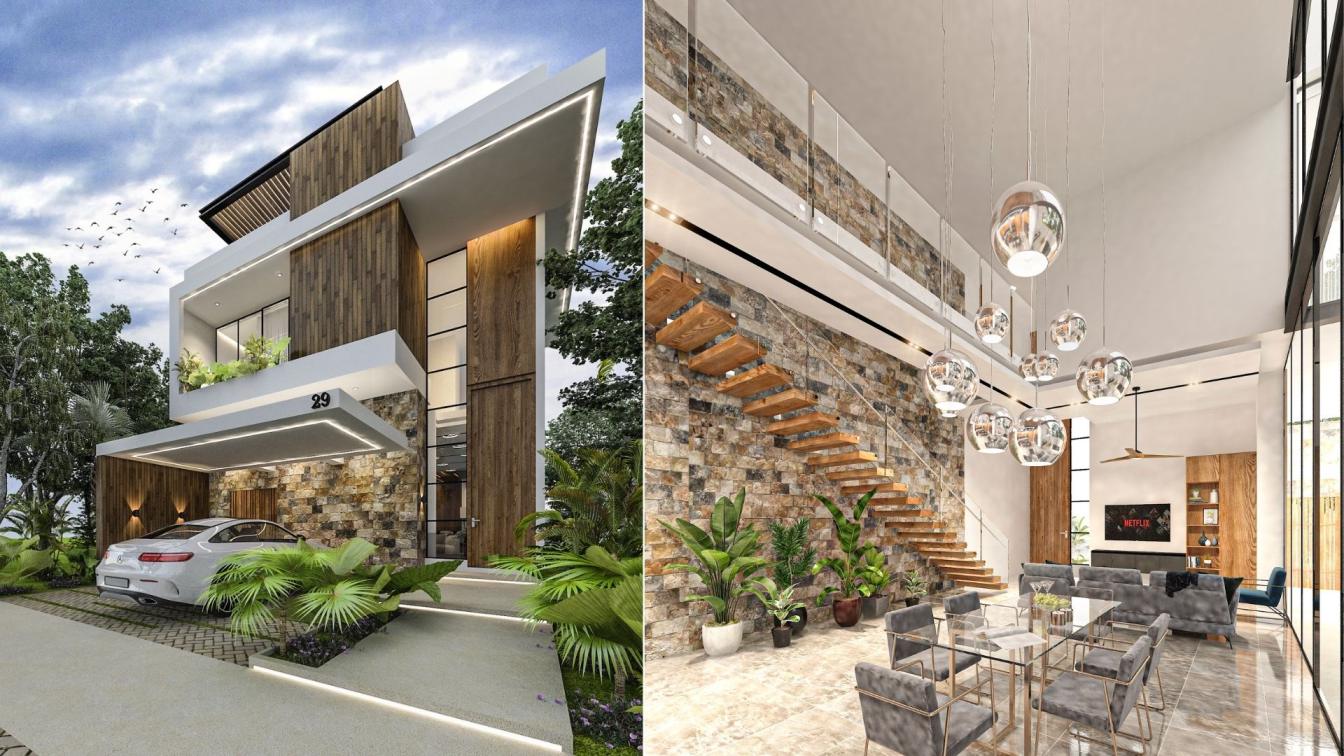Architectural designer Elija Halil has unveiled a revolutionary solar-powered architectural project in the Sahara Desert that presents a remarkable solution to our global energy problems.
At just 23 years old, Elija Halil has demonstrated visionary thinking and innovation by conceptualizing a groundbreaking project that harnesses the abundant solar energy potential of the Sahara Desert. This visionary project, aptly named "Solar Link, " integrates advanced solar technology with sustainable infrastructure, creating an ecosystem where clean energy generation meets the demands of the modern world.
Solar Link comprises a series of solar panel arrays meticulously designed and strategically positioned across vast stretches of the Sahara Desert. The project's prime location Murzuq District, Sahara Desert capitalizes on the region's unparalleled solar irradiance, enabling it to harness solar power on an unprecedented scale. With this innovative approach, Elija Halil aims to provide a clean and renewable energy source that could significantly alleviate the global energy crisis. Joseph Christopher Seaward, the owner of Blue Olive Studio, plays a key role in translating Elija Halil's vision of Solar Link into a visual concept.
The potential impact of the Solar Link project on the energy landscape is immense. Spanning an expanse of 167.5 km² within the Murzuq District of the Sahara Desert, covering a landmass measuring 100 kilometers by 235 kilometers with solar panels, this project holds the capability to exceed an estimated 8.65 Terawatts (TW) of power generation. To put this into perspective, it amounts to roughly two-thirds of the world's energy consumption as of 2023-Solar Link possesses the power to provide energy to nearly half of the global population encompassing millions of households, towns, cities, and even entire countries. Additionally, the excess energy produced by the Solar Link initiative can be effectively stored and transported over considerable distances, thereby transforming the Sahara Desert into an active renewable energy hub with the potential to export power to neighboring regions and far beyond.

Elija Halil's visionary approach to architectural design exemplifies a profound commitment to sustainability and environmental responsibility. This project not only addresses the pressing energy challenges faced by humanity but also showcases the immense potential of architecture and technology to contribute positively to our planet's well-being. The vision for Solar Link goes beyond standard sustainability norms.
By harnessing the Sahara Desert's abundant sunlight, Solar Link becomes a symbol of hope for a more eco friendly and lasting future in the energy field. The design seamlessly integrates advanced solar technologies across the extensive project, using the sun's energy to power communities, towns, and homes globally. The project's inventive solar energy systems, featuring cutting-edge photovoltaic arrays and concentrated solar power plants, hold the potential to generate a remarkable amount of clean, renewable energy. With its strategic position in the Sahara Desert, Solar Link can supply solar power to regions well beyond its immediate vicinity.
Approximately 174 petawatts (PW) of sunlight reaches the Earth's upper atmosphere continuously. However, due to factors such as atmospheric absorption, reflection, and scattering, the amount of sunlight that actually reaches the Earth's surface varies. On average, about 1361 watts per square meter (W/m²) of solar irradiance reaches the top of the Earth's atmosphere, also known as the solar constant, according to measurements made by the most recent NASA satellite missions.
While Solar Link, conceived by Elija Halil, could stand out as a unique project in its design, it certainly isn't the first to delve into the realm of energy possibilities. Elon Musk, the CEO of Space X and Tesla has emphasized the potential of solar energy, delving into its potential impact on human existence. The billionaire reiterated a concept he had previously shared back in June 2022.

In 2017, a report published by "Power Technology" titled "The Sahara: a solar battery for Europe" spotlighted a modest British firm called TuNur. This company had applied to the Tunisian government for permission to initiate the construction of a 4.5 Gigawatt concentrated solar power project situated in the Sahara Desert. Should this endeavor succeed, the resulting energy could be conveyed to Europe via subterranean cables, providing the continent with a novel, carbon-free alternative for baseline power, as elaborated in the article.
A recent article in Forbes highlighted the aspirations of both TuNur and Elmed (a proposed 600 MW undersea high-voltage direct current interconnector) in Tunisia. Their aim is to deliver clean electricity to Europe by transmitting it through Italy. According to the article, TuNur is expected to make its final investment decision by the year 2024.
Responding on Quora, Dr. Mehran Moalem, a distinguished Professor renowned for expertise in Nuclear Materials and Nuclear Fuel Cycle at UC Berkeley, offered insights. He stated that the comprehensive global energy consumption in 2015, encompassing coal, oil, hydroelectric, nuclear, and renewable sources, totaled 13,000 Million Tons of Oil Equivalent (13,000 MTOE) – data corroborated by World Energy Consumption & Stats. This cumulative energy usage corresponded to a consistent power output of 17.3 Terawatts throughout that year.
Expanding on the solar potential, Dr. Moalem outlined that by covering an area of Earth measuring 335 kilometers by 335 kilometers with solar panels, even with readily attainable moderate efficiencies, the outcome would exceed 17.4 Terawatts of power generation. This area encompasses 43,000 square miles. The vast expanse of the Great Saharan Desert in Africa, which experiences sunlight for over twelve hours daily, spans 3.6 million square miles and emerges as an ideal candidate for solar energy exploitation. He further illuminated that merely 1.2% of this colossal desert area would suffice to meet the world's entire energy demands through solar power.

Elija Halil emphasized that solar energy possesses a remarkable potential to revolutionize our world. To provide context, let's delve into the statistics. Over the course of a year, an average of about 342 watts of solar energy blankets each square meter of Earth's surface. This accumulates to a staggering 44 quadrillion watts of power annually – an extraordinary reserve.
To illustrate, consider that even a substantial electric power plant generates approximately 1 billion watts of power. In the course of the press release, he also mentioned that ''Solar energy stands as the Earth's most abundant energy source, with an unceasing influx of 173,000 terawatts of solar energy, continuously for 12 hours straight. This surpasses the world's entire energy consumption by over 10,000 times and we are basically just watching the sun strike earth daily.
Covering vast areas with solar panels, we aim to capture a fraction of that 44 quadrillion watts, transforming it into a tangible, usable energy source. The project's scale is mind-boggling, and its impact could be revolutionary. It's about tapping into the natural resource that our planet offers generously and converting it into a power that can drive progress without depleting our environment. The integration of solar energy holds the power to shift our energy paradigm dramatically. It's about decentralizing power production, bringing it closer to where it's needed, reducing transmission losses, and ensuring reliability. Solar energy can democratize access to energy, particularly in remote or underprivileged areas. It's a step towards energy independence, sustainability, and a future where our actions align more harmoniously with our planet's resources.''
Solar Link is set to become a global symbol of progress and hope, signaling a paradigm shift towards a future powered by clean and renewable energy. The project will serve as a model for other regions around the world, inspiring governments, industries, and individuals to embrace sustainable practices and forge a more resilient planet. In addition to its contribution to alleviating the global energy crisis, this initiative also generates numerous employment opportunities on a global scale. Beyond job creation, the Solar Link project ingeniously transforms solar-covered expanses into thriving green zones, fostering growth that resonates on a global scale and positively influences the world's food trade.

Solar energy has the potential to play a transformative role in addressing several critical global challenges and contributing to a sustainable future. Here are some ways in which solar energy can make a significant impact:
Climate Mitigation: Solar power is emission-free, aiding climate change mitigation by reducing harmful greenhouse gas emissions.
Energy Autonomy: Solar energy diversifies energy sources, lessening reliance on fossil fuels, thereby bolstering energy security.
Accessibility: Solar technology extends electricity to remote areas, bolstering education, healthcare, and living standards.
Job Creation: Solar adoption boosts renewable industries, fostering job growth in installation, manufacturing, and research.
Environmental Safeguard: Solar minimizes resource extraction, preserving ecosystems by reducing environmental degradation.
Decentralized Power: Solar panels on spaces promote efficiency by decreasing transmission losses.
Resilience: Solar with battery storage ensures stable power during outages, enhancing community resilience.
Innovation: Solar's growth drives technological advancements in efficiency, storage, and integration.
While solar energy alone may not solve all global challenges, its widespread adoption and integration into the energy mix can significantly contribute to a more sustainable and resilient world. By harnessing the power of the sun, we can reduce greenhouse gas emissions, promote energy independence, and improve access to clean and reliable electricity, ultimately helping to create a better future for generations to come.











Biography
Elija Halil, 23, is recognized for his innovative designs and commitment to sustainability. With a passion for merging art and technology, Elija strives to create architectural projects that transcend traditional boundaries and have a positive impact on the environment and society. Elija Halil's recent project, Mobius-E, has garnered substantial recognition, propelling his reputation and capturing the attention of industry leaders as a Part 1 Architectural designer. Elija's work continues to earn accolades and draw the interest of renowned figures in the field. His recent designs have been prominently featured in esteemed architectural publications, further showcasing his vision as a young designer in the industry.
Elija's journey in the field of architectural design commenced at Beacon High School, formerly known as Holloway School, where he first ignited his passion for artistic expression and spatial composition. His interest in architectural design led him to pursue further studies in Art and Design at City and Islington College, a pivotal juncture that allowed him to explore his creative skills and build his artistic vision.
Eager to delve deeper into the intricate field of architectural innovation, Elija pursued higher education at the University of Greenwich. In 2022, he graduated as a Part 1 Architectural Designer, marking a significant milestone in his career. Elija's projects, although yet to be realized physically, epitomize the realm of conceptual architecture. His ability to introduce novel ideas from diverse realms into architectural discourse places him squarely within the conceptual architecture category, a trailblazing domain that expands the horizons of architectural possibilities.
Blue Olive Studio prides itself on its collaborative approach to creativity. The studio's process involves close engagement with clients to understand their visions and transform them into breathtaking visual narratives. The team of skilled artists and professionals at Blue Olive Studio meticulously crafts every element, from textures to lighting, to breathe life into each project. Blue Olive Studio produced all 3D visuals for Elija Halils’ landmark project ‘Solar Link’. This dedication to innovation allows the studio to consistently deliver visuals that are not only visually stunning but also push the envelope of what is creatively possible.





